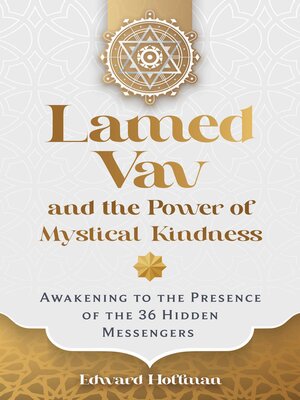Lamed Vav and the Power of Mystical Kindness
ebook ∣ Awakening to the Presence of the 36 Hidden Messengers
By Edward Hoffman

Sign up to save your library
With an OverDrive account, you can save your favorite libraries for at-a-glance information about availability. Find out more about OverDrive accounts.
Find this title in Libby, the library reading app by OverDrive.



Search for a digital library with this title
Title found at these libraries:
| Library Name | Distance |
|---|---|
| Loading... |
• Highlights the tradition of the Lamed Vav—36 hidden righteous individuals in every generation who sustain the world with acts of kindness
• Relates the Lamed Vav mythos to topics of positive psychology such as meditation, peak-experiences, synchronicity, and higher consciousness
• Provides activities based on the Kabbalah and early Hasidism to enhance your receptivity to Lamed Vav individuals in your life and become a Lamed Vav for others
If you have ever witnessed an act of extraordinary kindness, the sort that seems to come from beyond everyday human experience, perhaps you had an encounter with one of the Lamed Vav. According to Jewish mysticism, these 36 hidden and righteous individuals keep humanity alive through acts of sublime kindness.
Psychologist and professor Edward Hoffman explores this fascinating mythos from its Talmudic origins through the Kabbalah, early Hasidism, and recent appearance in the contemporary world. He examines the esoteric meaning of the number 36 (literally lamed vav) in Kabbalistic lore, as well as the Elijah archetype and its importance in the work of Carl Jung and his brilliant protégé Erich Neumann.
The author develops the notion of Lamed Vav consciousness—a powerful, inborn force for kindness that exists within each of us. He recounts the history of Jewish esoteric thought from its earliest writings and later luminaries including Abraham Abulafia, Rabbi Isaac Luria, and the Baal Shem Tov, founder of Hasidism.
Hoffman provides guided visualizations to enhance our Lamed Vav consciousness by drawing on themes from sacred texts like the Zohar and Jewish folklore, such as Miriam's Well, Solomon's Ring, and the Tree of Life. He also shares self-reflection exercises to help us recognize hidden Lamed Vav figures in our daily life and become a Lamed Vav to others by boosting our compassion, empathy, simplicity, playfulness, reverence for nature, and joy.
• Relates the Lamed Vav mythos to topics of positive psychology such as meditation, peak-experiences, synchronicity, and higher consciousness
• Provides activities based on the Kabbalah and early Hasidism to enhance your receptivity to Lamed Vav individuals in your life and become a Lamed Vav for others
If you have ever witnessed an act of extraordinary kindness, the sort that seems to come from beyond everyday human experience, perhaps you had an encounter with one of the Lamed Vav. According to Jewish mysticism, these 36 hidden and righteous individuals keep humanity alive through acts of sublime kindness.
Psychologist and professor Edward Hoffman explores this fascinating mythos from its Talmudic origins through the Kabbalah, early Hasidism, and recent appearance in the contemporary world. He examines the esoteric meaning of the number 36 (literally lamed vav) in Kabbalistic lore, as well as the Elijah archetype and its importance in the work of Carl Jung and his brilliant protégé Erich Neumann.
The author develops the notion of Lamed Vav consciousness—a powerful, inborn force for kindness that exists within each of us. He recounts the history of Jewish esoteric thought from its earliest writings and later luminaries including Abraham Abulafia, Rabbi Isaac Luria, and the Baal Shem Tov, founder of Hasidism.
Hoffman provides guided visualizations to enhance our Lamed Vav consciousness by drawing on themes from sacred texts like the Zohar and Jewish folklore, such as Miriam's Well, Solomon's Ring, and the Tree of Life. He also shares self-reflection exercises to help us recognize hidden Lamed Vav figures in our daily life and become a Lamed Vav to others by boosting our compassion, empathy, simplicity, playfulness, reverence for nature, and joy.







